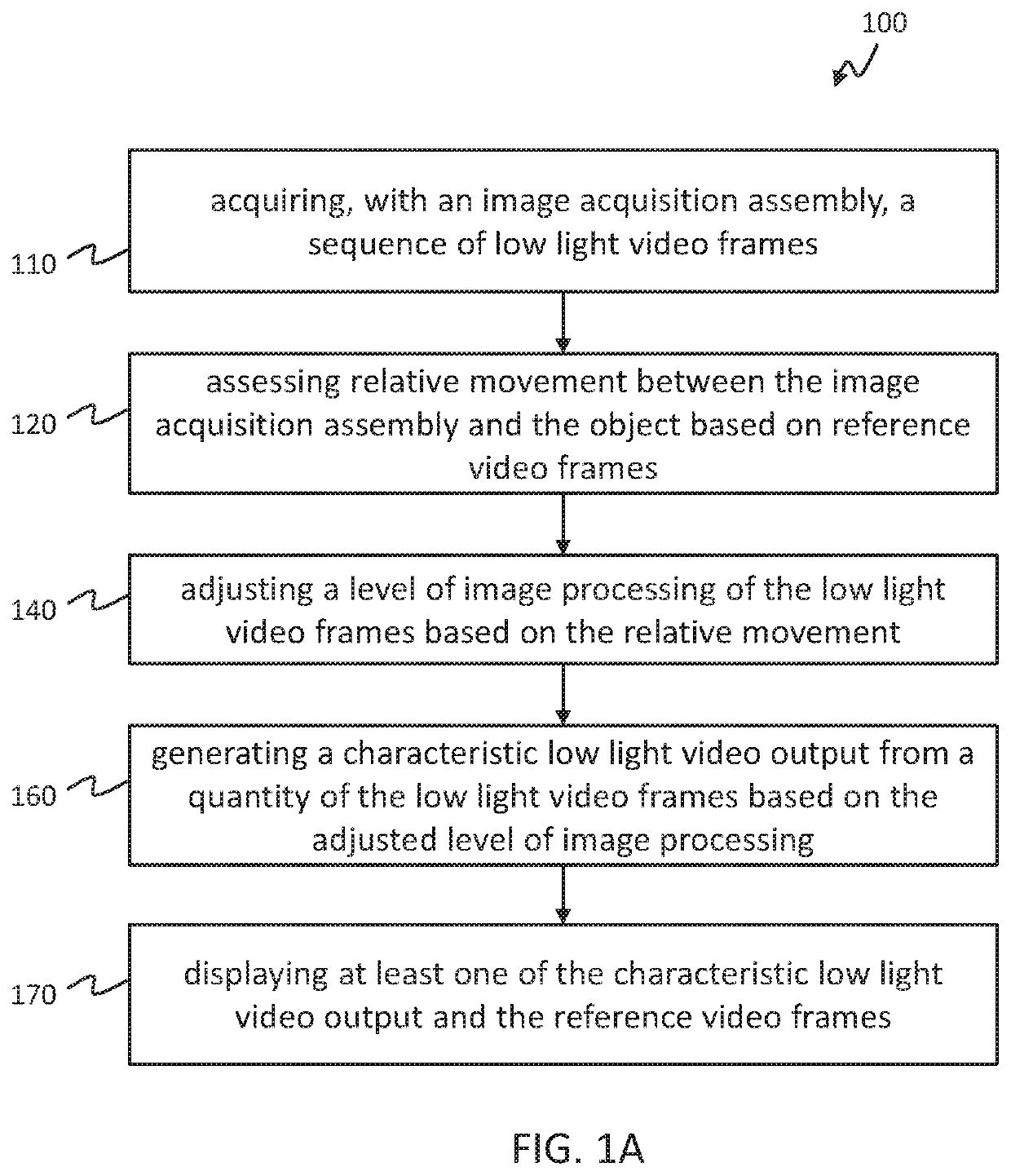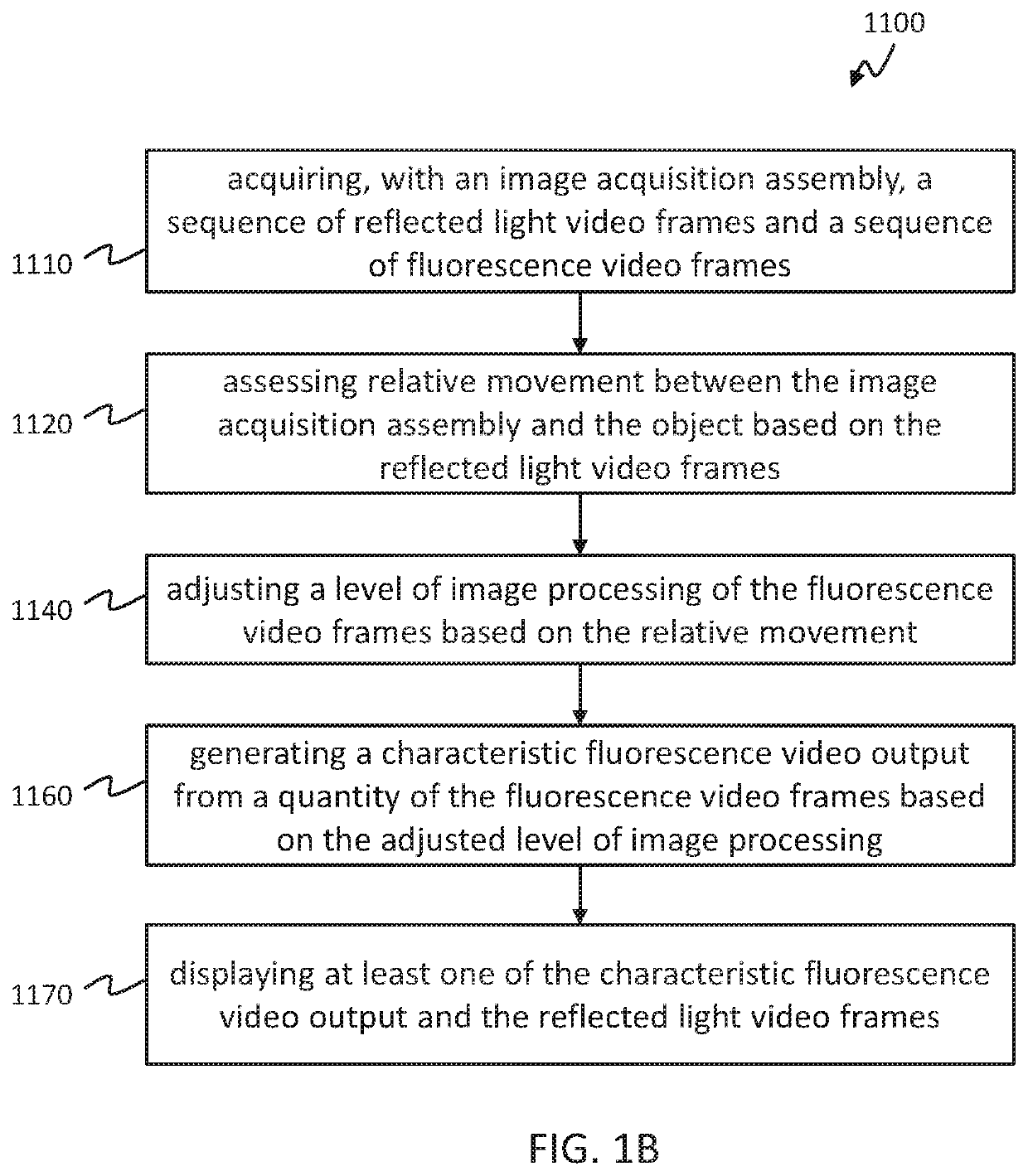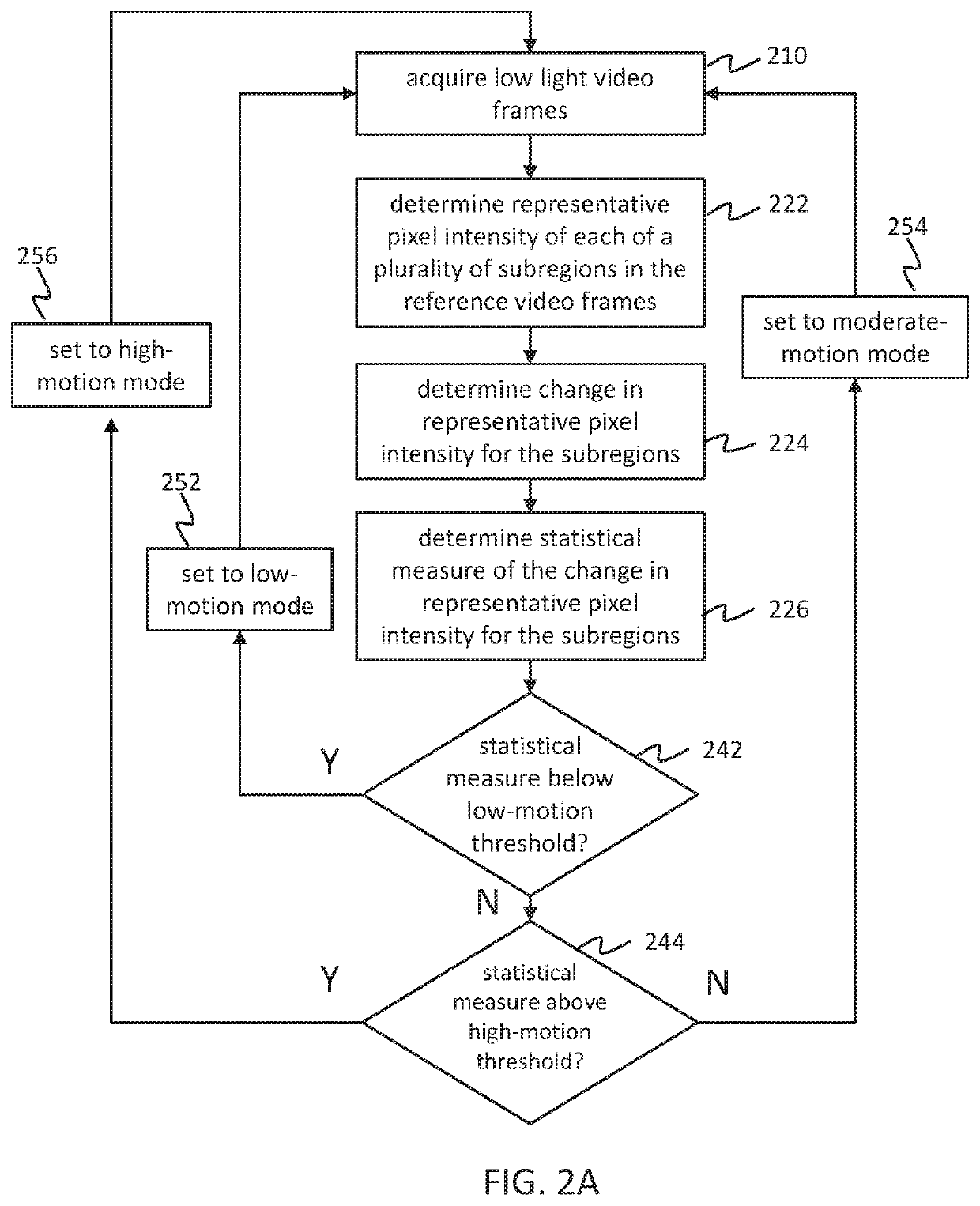Methods and systems for adaptive imaging for low light signal enhancement in medical visualization
a low light signal and adaptive imaging technology, applied in the field of medical imaging, can solve the problems of low signal level, limited quantum efficiency and/or deep tissue embedded in the tissue, and the imaging technology used in medical visualization can suffer performance degradation under low light conditions, so as to improve the assessment of relative motion, improve the visualization of low light image signals, and limit the introduction of image artifacts
- Summary
- Abstract
- Description
- Claims
- Application Information
AI Technical Summary
Benefits of technology
Problems solved by technology
Method used
Image
Examples
Embodiment Construction
[0059]Example embodiments will now be described more fully hereinafter with reference to the accompanying drawings; however, they may be embodied in different forms and should not be construed as limited to the embodiments set forth herein. Rather, these embodiments are provided so that this disclosure will be thorough and complete, and will fully convey exemplary implementations to those skilled in the art. Various devices, systems, methods, processors, kits and imaging agents are described herein. Although at least two variations of the devices, systems, methods, processors, kits and imaging agents are described, other variations may include aspects of the devices, systems, methods, processors, kits and imaging agents described herein combined in any suitable manner having combinations of all or some of the aspects described.
[0060]Generally, corresponding or similar reference numbers will be used, when possible, throughout the drawings to refer to the same or corresponding parts.
[...
PUM
 Login to View More
Login to View More Abstract
Description
Claims
Application Information
 Login to View More
Login to View More - R&D
- Intellectual Property
- Life Sciences
- Materials
- Tech Scout
- Unparalleled Data Quality
- Higher Quality Content
- 60% Fewer Hallucinations
Browse by: Latest US Patents, China's latest patents, Technical Efficacy Thesaurus, Application Domain, Technology Topic, Popular Technical Reports.
© 2025 PatSnap. All rights reserved.Legal|Privacy policy|Modern Slavery Act Transparency Statement|Sitemap|About US| Contact US: help@patsnap.com



